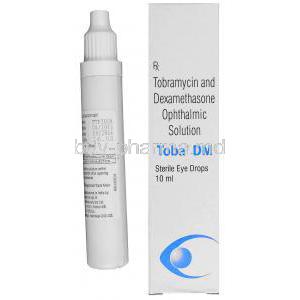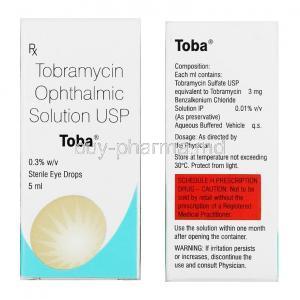Introduction
Overview of Visiocare Ophthalmic Ointment
Visiocare Ophthalmic Ointment is a specialized veterinary medication formulated to treat ocular conditions in dogs. It contains cyclosporine, an immunomodulatory agent that effectively manages dry eye syndrome and inflammatory ocular diseases. By promoting tear production and reducing inflammation, Visiocare provides relief for canines suffering from chronic eye conditions.
Importance of Cyclosporine in Veterinary Ophthalmology
Cyclosporine plays a pivotal role in veterinary ophthalmology due to its ability to suppress immune-mediated ocular disorders. This potent calcineurin inhibitor reduces T-cell activation, mitigating inflammatory responses that contribute to conditions such as keratoconjunctivitis sicca (KCS) and pannus. Unlike corticosteroids, cyclosporine provides immunosuppressive effects without the risk of systemic side effects.
FDA Approval and Regulatory Status
Visiocare Ophthalmic Ointment is an FDA-approved veterinary medication, ensuring its safety and efficacy in treating canine ocular diseases. Regulatory agencies worldwide recognize its therapeutic potential, reinforcing its status as a trusted treatment option for veterinarians and pet owners alike.
Role of Visiocare in Managing Ocular Conditions in Dogs
By enhancing tear production and alleviating ocular inflammation, Visiocare serves as a cornerstone treatment for chronic eye diseases in dogs. It prevents corneal damage, improves visual comfort, and enhances the overall quality of life for affected canines.
Composition and Active Ingredients
Cyclosporine: Mechanism of Action and Benefits
Cyclosporine functions by inhibiting T-cell activation, reducing inflammatory cytokine production, and promoting lacrimal gland function. These effects make it an essential treatment for autoimmune-mediated eye disorders in dogs.
Other Excipients and Their Functions
- Ointment base: Ensures prolonged contact with the ocular surface.
- Emulsifiers: Enhance drug dispersion and absorption.
- Stabilizers: Prevent degradation and ensure shelf stability.
Formulation and Pharmaceutical Properties
Visiocare is formulated as a sterile ophthalmic ointment to ensure maximum efficacy and patient compliance. Its lipid-soluble nature allows for deep penetration into ocular tissues, optimizing therapeutic outcomes.
How Visiocare Ophthalmic Ointment Works
Mechanism of Action of Cyclosporine in Ocular Therapy
Cyclosporine binds to cyclophilin, inhibiting calcineurin and preventing the activation of nuclear factor of activated T-cells (NFAT). This disruption reduces inflammation and halts disease progression.
Immunosuppressive and Anti-Inflammatory Properties
Unlike steroids, cyclosporine selectively suppresses immune responses without hindering wound healing, making it ideal for long-term use in chronic eye diseases.
Effect on Tear Production and Corneal Health
By stimulating the lacrimal glands, Visiocare restores natural tear film, preventing corneal desiccation, ulceration, and potential vision loss.
Duration of Action and Absorption Rate
Following application, cyclosporine remains active on the ocular surface for several hours, providing sustained therapeutic effects with minimal systemic absorption.
Approved Uses and Indications
Treatment of Keratoconjunctivitis Sicca (KCS) in Dogs
Visiocare is the gold-standard treatment for KCS, effectively restoring tear production and alleviating dry eye symptoms.
Management of Chronic Superficial Keratitis (Pannus)
By reducing corneal vascularization and pigmentation, Visiocare helps manage pannus, preserving visual function in affected dogs.
Use in Corneal Ulcers and Dry Eye Syndrome
Cyclosporine supports corneal healing by maintaining an optimal ocular environment, preventing further damage and discomfort.
Prevention of Ocular Surface Inflammation
Regular use of Visiocare mitigates inflammatory flare-ups, preserving corneal integrity and overall eye health.
Off-Label Uses of Visiocare Ophthalmic Ointment
Treatment of Autoimmune Uveitis
Visiocare shows promise in managing immune-mediated uveitis, reducing intraocular inflammation and associated pain.
Management of Conjunctivitis and Ocular Allergies
Though not a primary treatment, cyclosporine can help manage allergic conjunctivitis by dampening immune hypersensitivity reactions.
Use in Feline Keratitis and Dry Eye
Veterinary ophthalmologists sometimes use Visiocare in cats with keratitis, particularly in cases resistant to conventional treatments.
Potential Application in Equine Ophthalmic Conditions
Research suggests that cyclosporine may benefit horses with immune-mediated ocular disorders, expanding its veterinary applications.
Dosage and Administration Guidelines
Recommended Dosage for Canine Patients
Typical dosing involves applying a small ribbon of ointment into the affected eye(s) 1-2 times daily, as prescribed by a veterinarian.
Proper Application Techniques
- Wash hands before and after application.
- Gently retract the lower eyelid to create a pocket.
- Apply a thin layer of ointment directly into the conjunctival sac.
- Allow the dog to blink naturally to distribute the medication.
Frequency and Duration of Treatment
Long-term use is often required for chronic conditions, with treatment frequency adjusted based on response.
Missed Dose Protocol and Guidelines
If a dose is missed, apply it as soon as possible. However, if it is close to the next scheduled dose, skip the missed dose to avoid over-application.
Adjustments in Dosage Based on Condition Severity
Severe cases may require higher-frequency dosing, while mild conditions might necessitate maintenance therapy.
Side Effects and Adverse Reactions
Common Side Effects in Dogs
Ocular Irritation and Redness
Mild irritation may occur initially as the eyes adjust to the medication.
Temporary Blurred Vision
Dogs might exhibit brief visual disturbances following application, which resolve as the ointment spreads.
Increased Ocular Discharge
Some dogs develop transient watery discharge as their tear production normalizes.
Severe Adverse Reactions
Systemic Absorption and Related Risks
Though minimal, systemic absorption can lead to immunosuppressive effects in rare cases.
Secondary Ocular Infections
Prolonged use without monitoring may predispose dogs to secondary bacterial or fungal infections.
Allergic Reactions and Hypersensitivity
Signs of hypersensitivity include excessive redness, swelling, and intense discomfort, warranting immediate veterinary attention.
Important Precautions and Warnings
Precautions Before Starting Treatment
Prior to initiating Visiocare ophthalmic ointment therapy, a thorough ophthalmic examination is imperative. This ensures accurate diagnosis and eliminates contraindications. Canines with concurrent systemic conditions or compromised immune function require additional evaluation to determine suitability.
- Baseline tear production should be assessed using the Schirmer tear test.
- Veterinary professionals must rule out microbial infections before administration.
- A history of hypersensitivity to cyclosporine or related compounds warrants caution.
Risk of Long-Term Use and Potential Complications
Prolonged application of cyclosporine-based ophthalmic treatments, while largely well-tolerated, necessitates vigilance. Chronic use may predispose dogs to secondary ocular infections due to immune modulation. Additionally, excessive suppression of inflammatory responses can mask underlying conditions requiring alternative management strategies.
Monitoring for Adverse Reactions
Regular veterinary assessments are crucial to detect emerging complications. Pet owners should remain vigilant for the following signs:
- Unexplained ocular discharge or excessive tearing.
- Persistent conjunctival hyperemia (redness).
- Increased photophobia or squinting.
- Development of periocular dermatitis.
Importance of Veterinary Supervision
Veterinary oversight is essential for ensuring optimal therapeutic outcomes. Adjustments in dosage, frequency, or concurrent therapies must only be made under professional guidance. Periodic reevaluation allows for timely intervention if complications arise.
Contraindications and When Not to Use
Known Hypersensitivity to Cyclosporine
Dogs with a documented allergy to cyclosporine or its derivatives should not receive Visiocare. Hypersensitivity reactions may manifest as severe pruritus, eyelid swelling, or anaphylactic symptoms.
Presence of Active Ocular Infections
Preexisting bacterial, viral, or fungal infections contraindicate cyclosporine therapy. Immunosuppressive action may exacerbate infections, leading to corneal ulceration or systemic dissemination.
Use in Dogs with Corneal Perforation or Ulceration
Application of cyclosporine to an ulcerated cornea can impede natural healing processes. In cases of deep corneal ulcers or perforation, alternative treatment modalities should be pursued until epithelialization is complete.
Not Recommended for Dogs with Severe Liver or Kidney Disease
While topical administration minimizes systemic absorption, trace amounts may enter circulation. Dogs with hepatic or renal insufficiency require cautious evaluation before initiating therapy.
Drug Interactions and Compatibility
Potential Interactions with Other Ophthalmic Medications
Visiocare may be used alongside artificial tears or lubricants, but concurrent administration with other ophthalmic immunosuppressants requires careful consideration.
Effects When Used with Systemic Immunosuppressants
Co-administration with systemic cyclosporine or corticosteroids may amplify immunosuppressive effects, increasing the risk of opportunistic infections.
Compatibility with Artificial Tears and Lubricants
Artificial tear solutions complement cyclosporine therapy by maintaining ocular surface hydration. They should be applied at least 5-10 minutes apart to avoid dilution effects.
Avoidance of Concurrent Use with Corticosteroids
Combining cyclosporine with topical corticosteroids may potentiate immune suppression, potentially delaying corneal healing. Veterinary discretion is advised.
Administration Considerations for Special Populations
Use in Senior Dogs (Geriatric Administration)
Age-Related Changes in Ocular Health
Aging dogs often exhibit reduced tear production, making them more susceptible to dry eye syndromes. Regular ophthalmic evaluations help tailor treatment regimens.
Adjusting Dosage in Older Dogs
While the standard dosing remains applicable, older dogs may benefit from adjunctive therapies, such as omega-3 supplementation, to support ocular health.
Use in Pregnant and Nursing Dogs
Safety Profile During Pregnancy
There is limited data regarding the teratogenic effects of topical cyclosporine. It should only be used in pregnant dogs if the benefits outweigh potential risks.
Potential Effects on Lactating Puppies
Minimal systemic absorption suggests a low risk to nursing puppies. However, veterinary consultation is recommended before administering Visiocare to lactating dogs.
Use in Puppies and Young Dogs
Developmental Considerations
Puppies with congenital lacrimal gland dysfunction may require early intervention with cyclosporine to prevent keratoconjunctivitis sicca.
Safety and Efficacy in Younger Canines
While generally safe, long-term studies on juvenile canine populations are limited. Monitoring for developmental ocular changes is advisable.
Overdosage and Toxicity Management
Signs and Symptoms of Overdosage
Excessive application may result in transient ocular irritation, excessive lacrimation, and periocular dermatitis.
Emergency Treatment for Excessive Application
Rinse the affected eye with sterile saline solution if an overdose is suspected. Seek veterinary evaluation if symptoms persist.
Veterinary Protocol for Cyclosporine Overdose
Systemic toxicity is unlikely with topical application. However, in rare cases, supportive therapy such as anti-inflammatory treatment may be required.
Storage and Handling Guidelines
Optimal Storage Conditions for Stability
Store at controlled room temperature (15-25°C). Avoid direct sunlight and excessive heat.
Protecting the Ointment from Contamination
- Ensure the cap is securely replaced after each use.
- Do not touch the applicator tip to any surface, including the eye.
Shelf Life and Expiry Considerations
Check the expiration date before use. Discard any ointment showing signs of discoloration or separation.
Proper Disposal of Unused or Expired Medication
Dispose of expired ointment per veterinary pharmaceutical waste guidelines. Avoid flushing into water systems.
Handling Precautions for Pet Owners and Veterinarians
Safe Handling Instructions
- Wash hands before and after application.
- Wear gloves if hypersensitivity to cyclosporine is a concern.
Avoiding Cross-Contamination
Use separate applicators for dogs receiving bilateral treatment. Avoid sharing medication between multiple pets.
Precautions for Individuals with Allergies to Cyclosporine
Individuals with known allergies should take precautions when administering Visiocare. Protective gloves or alternative application methods may be required.
Conclusion
Summary of Benefits and Risks
Visiocare ophthalmic ointment offers an effective solution for canine dry eye and related inflammatory conditions. While generally well-tolerated, vigilance in monitoring for adverse effects is essential.
Importance of Veterinary Guidance
Professional veterinary oversight ensures appropriate use, dosage adjustments, and early detection of complications.
Encouragement for Proper Compliance and Follow-Up
Consistent administration and routine veterinary check-ups optimize treatment outcomes, enhancing the quality of life for affected canines.
Visiocare Ophthalmic Ointment for Dogs, Cyclosporine FAQ
What is Visiocare ointment used for?
Visiocare ointment is effective for managing eye syndrome keratoconjunctivitis sicca (KCS), chronic superficial keratitis (CKS), and various other canine eye conditions.
What is ophthalmic eye ointment used for?
When it comes to managing eye-related issues, like eye infections such as eye and eyelid problems like blepharitis and meibomian gland dysfunction ointments for the eyes are commonly suggested.
What is the best time to apply eye ointment?
Eye ointments should be put in after applying eye drops as the ointment may cause blurriness in vision for a few minutes.
What is cyclosporine ointment used for?
Cyclosporine for the eyes is prescribed to boost production for individuals suffering from eye syndrome.






















